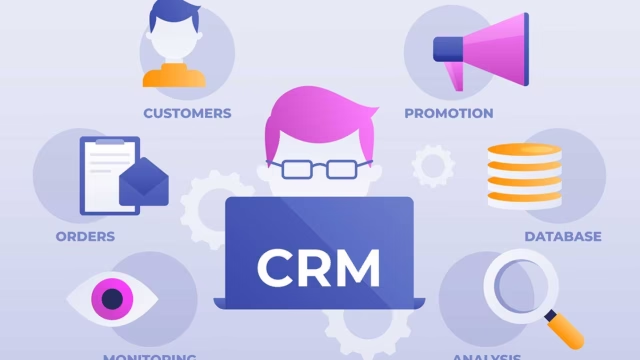Introduction
In today’s competitive business environment, keeping a customer is just as important as acquiring one. Brands spend significant amounts on advertising and outreach, but the long-term profitability of a business largely depends on its ability to retain customers. Customer Relationship Management (CRM) systems have become essential tools in this journey. They not only help businesses understand customer behavior but also play a central role in reducing churn and increasing retention rates.
Understanding Customer Churn
Customer churn refers to the rate at which customers stop doing business with a company. While some level of churn is inevitable, excessive churn often signals deeper issues such as poor customer service, lack of engagement, or competitors offering better value. Churn can severely impact recurring revenue, making it crucial for businesses to adopt strategies that prevent it.
A CRM solution is specifically designed to address these challenges. By capturing every customer interaction, it provides valuable insights into customer journeys, preferences, and areas where the relationship may be at risk. This data-driven approach helps companies act quickly before a customer decides to leave.
Why Customer Retention Matters More Than Ever
Retaining a customer is significantly more cost-effective than acquiring a new one. Research suggests that improving customer retention rates by just 5% can increase profits anywhere from 25% to 95%. This is because loyal customers not only purchase more but also become advocates who bring in referrals. In industries such as network marketing, where relationships are the foundation of success, retention strategies are especially critical.
By using advanced CRM tools for network marketing, companies can ensure that distributors and customers remain engaged through personalized communication, timely support, and clear visibility into their progress. The result is stronger trust and long-term loyalty.
How CRM Helps Reduce Customer Churn
A well-implemented CRM system works as a proactive tool to reduce churn by addressing the root causes. Here are some of the key ways it contributes:
1. Predictive Insights
Modern CRM platforms use analytics to identify warning signs of potential churn. For instance, a sudden drop in purchases, reduced logins, or negative feedback are automatically flagged, allowing businesses to take corrective action.
2. Improved Customer Support
One of the most common reasons customers leave is poor service. CRM systems consolidate all communication—emails, calls, chats—into a single view, enabling service teams to respond faster and more effectively. This ensures customers feel valued and supported.
3. Personalized Engagement
Generic messages no longer work in retaining today’s customers. CRM platforms allow segmentation of customers based on preferences, buying history, or behavior. Personalized emails, targeted offers, and relevant product recommendations make customers feel understood, increasing the likelihood of retention.
4. Streamlined Onboarding
For businesses such as MLM organizations, proper onboarding is critical. CRM solutions automate this process by sending welcome kits, educational content, and reminders, ensuring new customers and distributors feel connected right from the start.
5. Loyalty and Reward Programs
CRM systems make it easier to manage loyalty programs by tracking purchases and rewarding repeat customers. This not only encourages consistent engagement but also strengthens emotional bonds with the brand.
The Connection Between Retention and Growth
Customer retention is not just about preventing losses—it directly impacts long-term growth. Companies that consistently engage their customers build a stronger reputation, which in turn attracts new prospects. A loyal base also provides valuable feedback for improving products and services, ensuring continuous improvement.
For businesses involved in direct selling or MLM, the role of CRM becomes even more important. A powerful complete network marketing software suite that integrates CRM ensures distributors have access to real-time data, reports, and communication tools, enabling them to focus on building relationships rather than administrative tasks. This efficiency fosters better retention both at the distributor and customer level.
Best Practices for Using CRM to Reduce Churn
To make the most of CRM, businesses should adopt best practices that align technology with customer-centric strategies:
- Monitor Customer Health Scores: Create measurable indicators such as purchase frequency, engagement rates, or complaint logs to assess customer satisfaction.
- Automate Follow-Ups: Use CRM to schedule reminders for service renewals, payment due dates, or personalized offers.
- Leverage Feedback Loops: Encourage reviews and surveys through CRM tools. Addressing issues quickly shows customers that their voice matters.
- Train Teams Effectively: Ensure employees know how to use CRM features for customer interactions rather than just data entry.
- Integrate Across Channels: From social media to email campaigns, CRM should serve as a central hub to deliver a seamless customer experience.
Final Thoughts
Customer churn is one of the biggest threats to business sustainability, but with the right tools and strategies, it can be significantly reduced. CRM systems empower companies to move beyond transactional interactions and build meaningful, long-term relationships with their customers. By focusing on personalization, proactive support, and consistent engagement, businesses can not only retain their customers but also turn them into brand advocates.
In industries like network marketing, where relationships drive growth, a robust CRM solution becomes more than just software—it becomes the backbone of retention strategies. Companies that invest in the right CRM practices today are better positioned to enjoy long-term success, stronger customer loyalty, and sustained growth tomorrow.







